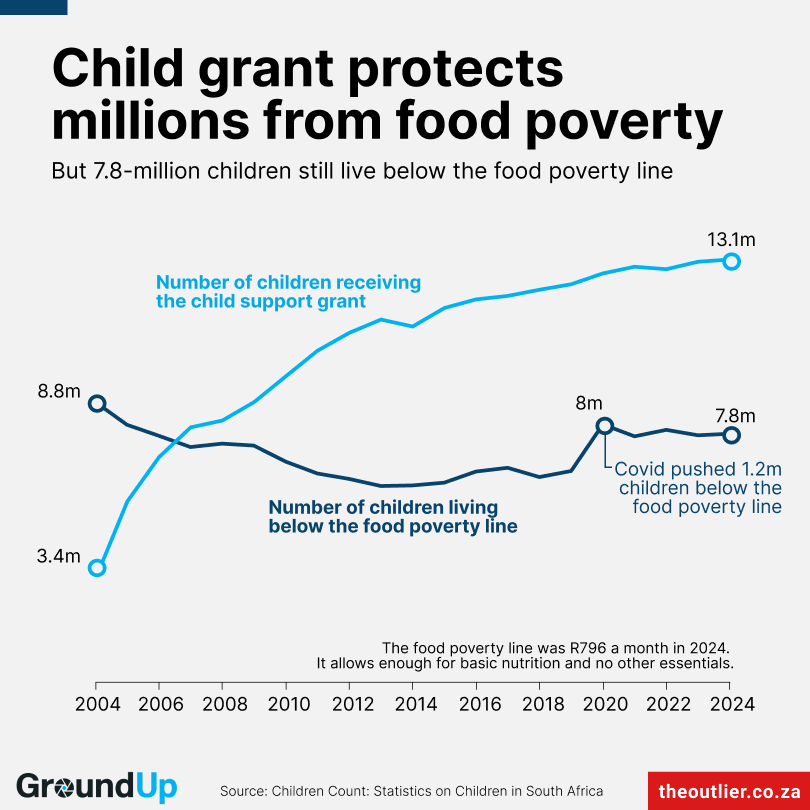Halting Evictions Is Good Child Welfare Policy – Jacobin

Report on the Impact of Housing Eviction on Child Welfare and Sustainable Development Goals
Introduction: Housing Insecurity as a Barrier to Sustainable Development
A new study by the National Bureau of Economic Research (NBER) provides a quantitative analysis of the detrimental effects of housing eviction on children. By tracking over 350,000 children in Chicago and New York City, the research highlights how housing instability directly undermines several key Sustainable Development Goals (SDGs). The findings demonstrate that policies aimed at preventing evictions are not merely housing initiatives but are essential for advancing child welfare, promoting quality education, reducing poverty, and building sustainable communities.
The report isolates the causal impact of eviction by comparing outcomes for children in families whose cases were heard by judges with varying tendencies to order evictions. This methodology reveals that eviction is a uniquely destructive event that derails children’s development, with consequences that align directly with the targets of the SDGs.
Analysis of Findings in Relation to the Sustainable Development Goals
SDG 1 (No Poverty) & SDG 11 (Sustainable Cities and Communities): The Link Between Eviction, Homelessness, and Housing Instability
The study provides stark evidence that eviction is a primary driver of poverty and housing precarity, directly contravening the aims of SDG 1 and SDG 11, which call for an end to poverty and access to safe, affordable housing for all.
- Increased Homelessness: Evicted children were significantly more likely to enter the homeless services system.
- In Chicago, the likelihood increased by 7 percentage points in the year following the eviction.
- In New York, the likelihood increased by 3.1 percentage points.
- Chronic Residential Instability: Eviction triggers a cycle of repeated moves, preventing families from establishing stable living conditions necessary for community integration.
- Informal Housing Arrangements: The likelihood of children living in “doubled-up” arrangements with relatives increased by 17 percentage points, indicating that formal housing systems are failing to support displaced families.
SDG 4 (Quality Education): Severe Educational Disruption
The research quantifies the severe disruption eviction causes to children’s education, creating significant barriers to achieving SDG 4, which aims to ensure inclusive and equitable quality education for all.
- Educational Instability: Evicted children were 46% more likely to switch schools during the year of their case, severing connections with teachers and peers.
- Chronic Absenteeism: Eviction led to a 9 percentage point increase in chronic absenteeism, defined as missing over 10% of school days.
- Reduced Graduation Rates: The long-term impact on academic attainment is severe, with eviction reducing high-school graduation rates by 12.5 percentage points. This is attributed more to the disruption of school engagement and routine than to an impairment of cognitive skills.
SDG 10 (Reduced Inequalities) & SDG 5 (Gender Equality): Disproportionate Impacts
The effects of eviction are not evenly distributed, exacerbating existing inequalities and revealing gender-specific vulnerabilities, which directly relates to the goals of SDG 10 and SDG 5.
- Exacerbated Inequality: Eviction proceedings overwhelmingly involve low-income households, trapping children in a cycle of disadvantage that perpetuates intergenerational poverty.
- Gender-Specific Outcomes: The study found that boys were hit particularly hard by the educational consequences of eviction, experiencing larger increases in absenteeism and greater declines in academic performance. Researchers speculate this may be linked to boys having less access to the social safety net of extended family networks.
Policy Implications for Achieving the SDGs
Housing Policy as a Cornerstone of Child Protection and Sustainable Development
The report’s findings underscore that tenant protection policies are fundamental to achieving broader social and economic goals outlined in the 2030 Agenda for Sustainable Development. Measures that halt evictions serve as a direct intervention to support multiple SDGs.
Recommendations for Institutional Action (SDG 16: Peace, Justice and Strong Institutions)
To build stronger institutions that protect vulnerable populations, cities and states should consider implementing robust tenant protection laws. Policies such as “good cause” eviction protections and rent freezes can severely curtail the practice of eviction, thereby safeguarding the well-being of children and promoting societal stability.
Protecting families from eviction is an essential strategy for ensuring children can maintain the social and institutional connections vital for their development. The long-term societal benefits of fostering stable, educated, and healthy future generations far outweigh the short-term financial interests of the real estate industry, making housing security a critical investment in a sustainable future.
Sustainable Development Goals (SDGs) Addressed in the Article
-
SDG 1: No Poverty
The article connects directly to SDG 1 by highlighting how eviction is a significant driver of poverty and instability for families. It discusses how evicted families are more likely to experience homelessness and rely on precarious living situations, such as “doubling up” with relatives. The article states that “every year, roughly 2.7 million American households face eviction proceedings,” which pushes them further into economic hardship and vulnerability, a core concern of SDG 1.
-
SDG 4: Quality Education
This goal is a central theme of the article. The research cited demonstrates a direct causal link between eviction and negative educational outcomes for children. The article details how eviction leads to “severe educational disruption,” including increased school switching, chronic absenteeism, lower credit accumulation for high schoolers, and a significant drop in graduation rates. These findings directly relate to the goal of ensuring inclusive and equitable quality education for all.
-
SDG 10: Reduced Inequalities
The article addresses SDG 10 by showing how eviction disproportionately affects vulnerable populations and creates unequal outcomes. The study’s methodology, which compares cases based on the random assignment of judges with varying leniency, reveals systemic inequality. Furthermore, the article notes that the negative impacts are not evenly distributed, finding that “boys were hit especially hard, experiencing larger increases in absences and bigger drops in academic performance,” pointing to inequalities of outcome based on gender.
-
SDG 11: Sustainable Cities and Communities
The core issue of the article—housing instability and eviction—is a primary focus of SDG 11. The article discusses the housing crisis in cities like New York and Chicago, where millions of families lack secure housing. It explicitly frames policy solutions like “good cause eviction protections” and “rent freezes” as essential for creating stable communities. The text underscores the failure to provide safe and stable housing when it notes that eviction forces families out of their homes and undermines the “social and institutional connections that provide children with stability.”
Specific SDG Targets Identified
-
SDG 1: No Poverty
- Target 1.2: By 2030, reduce at least by half the proportion of men, women, and children of all ages living in poverty. The article’s focus on the 2.9 million children affected by eviction proceedings annually directly relates to this target, as preventing eviction is a key strategy to stop families from falling into poverty and homelessness.
- Target 1.3: Implement nationally appropriate social protection systems. The article identifies policies like “‘good cause’ eviction protections” and a “rent freeze” as social protection measures that can prevent the instability and poverty caused by eviction.
-
SDG 4: Quality Education
- Target 4.1: By 2030, ensure that all girls and boys complete free, equitable and quality primary and secondary education. The article’s finding that eviction “reduced high-school graduation rates by 12.5 percentage points” shows a direct barrier to achieving this target.
- Target 4.5: By 2030, eliminate gender disparities in education and ensure equal access… for children in vulnerable situations. The research highlights that evicted children are a vulnerable group, and specifically notes that “boys were hit especially hard” by the academic consequences, which speaks directly to this target.
-
SDG 10: Reduced Inequalities
- Target 10.2: By 2030, empower and promote the social, economic and political inclusion of all, irrespective of… economic or other status. Eviction is presented as a process of exclusion that derails young lives. Policies to halt evictions are framed as a way to ensure families can remain included in their communities and schools.
- Target 10.3: Ensure equal opportunity and reduce inequalities of outcome. The study’s finding that the outcome of an eviction case can depend on which judge is randomly assigned highlights an inequality of outcome. Policies like “good cause” eviction aim to create a more equitable process for all tenants.
-
SDG 11: Sustainable Cities and Communities
- Target 11.1: By 2030, ensure access for all to adequate, safe and affordable housing. The entire article is predicated on the failure to meet this target, evidenced by the “2.7 million American households” facing eviction annually. The discussion of rent freezes and eviction protections are direct policy responses aimed at achieving this target.
Indicators for Measuring Progress
The article provides several quantitative metrics from the NBER study that can serve as indicators to measure progress towards the identified targets.
-
Indicators for Housing Stability (SDG 1, SDG 11)
- Rate of eviction filings: The article mentions “roughly 2.7 million American households face eviction proceedings” annually. A reduction in this number would indicate progress.
- Child homelessness rate: The study found evicted children were “7 percentage points more likely to enter Chicago’s homeless services system and 3.1 percentage points more likely in New York.” Tracking this metric would measure the direct impact on child welfare.
- Rate of informal housing arrangements: The article states eviction “increased children’s likelihood of living in such [doubled-up] arrangements by 17 percentage points.” This can be used as an indicator of housing precarity.
-
Indicators for Educational Outcomes (SDG 4)
- Student mobility/school switching rate: The article notes that “Evicted children were 46 percent more likely to switch schools.” This is a clear indicator of educational disruption.
- Chronic absenteeism rate: Progress can be measured by tracking the “9 percentage points” increase in chronic absenteeism among evicted children.
- High school credit accumulation: The finding that “Evicted teens saw their credit accumulation drop by 14 percentage points” serves as a direct indicator of academic performance.
- High school graduation rate: The most significant educational indicator mentioned is that eviction “reduced high-school graduation rates by 12.5 percentage points.”
Summary of SDGs, Targets, and Indicators
| SDGs | Targets | Indicators |
|---|---|---|
| SDG 1: No Poverty |
1.2: Reduce poverty in all its dimensions.
1.3: Implement social protection systems. |
– Percentage point increase in child homelessness post-eviction (7 pp in Chicago, 3.1 pp in NY). – Percentage point increase in children living in “doubled up” arrangements (17 pp). |
| SDG 4: Quality Education |
4.1: Ensure completion of primary and secondary education.
4.5: Eliminate gender disparities and ensure equal access for the vulnerable. |
– Percentage increase in likelihood of switching schools (46% more likely). – Percentage point increase in chronic absenteeism (9 pp). – Percentage point drop in high-school credit accumulation (14 pp). – Percentage point reduction in high-school graduation rates (12.5 pp). |
| SDG 10: Reduced Inequalities |
10.2: Promote social and economic inclusion.
10.3: Ensure equal opportunity and reduce inequalities of outcome. |
– Disparity in academic outcomes between boys and girls post-eviction. – Disparity in eviction rulings based on random judge assignment. |
| SDG 11: Sustainable Cities and Communities | 11.1: Ensure access to adequate, safe and affordable housing. |
– Number of households facing eviction annually (2.7 million). – Number of children in households facing eviction (2.9 million). – Percentage of eviction cases involving households with children (53-56% in Cook County). |
Source: jacobin.com

What is Your Reaction?
 Like
0
Like
0
 Dislike
0
Dislike
0
 Love
0
Love
0
 Funny
0
Funny
0
 Angry
0
Angry
0
 Sad
0
Sad
0
 Wow
0
Wow
0














































































